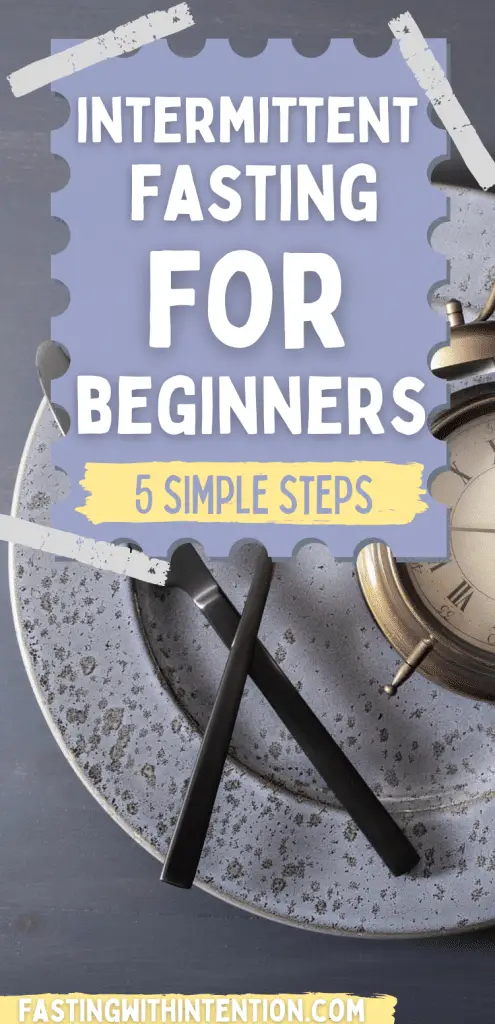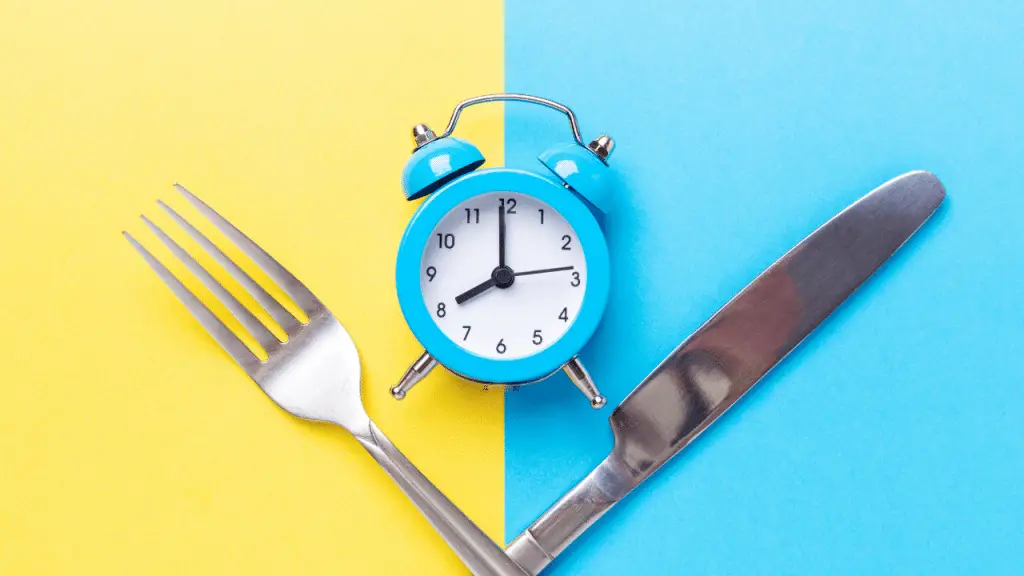In this post, you will learn how to start intermittent fasting in 5 simple steps Moreover, you will discover the benefits of intermittent fasting, the different types of intermittent fasting that you can start practicing today and how intermittent fasting could be the weight loss tool you have been wishing you had.
Types of Intermittent Fasting
Let’s start with the different types of fasting because understanding how intermittent fasting works will be crucial and helping you decide how to start intermittent fasting. Intermittent fasting is all about going through cycles of eating and fasting.
There are many ways to create these cycles. Some people make sure they have a “fasting window” each day, which means they are not eating for at least 12-14 hours. Others fast 2-3 times a week. The type of intermittent fasting you choose will depend on your health goal and how your body is responding to fasting. Don’t worry, I will give you some tips to pick the right type for you so you can decide how to start with intermittent fasting. Here are the most common intermittent fasting types:
- Leangains method: The Leangains method is better known as the 16/8 method. It involves fasting for 16 hours and eating all your meals within an 8-hour window.
- Warrior method: If you choose the warrior method, you are fasting for 20 hours and consuming all your calories within a 4-hour timeframe.
- Eat-Stop-Eat method: The eat-stop-eat method involves fasting completely for 24-hour stretches.
- 5:2 method: With the 5:2 method, you are eating normally 5 days a week and eating around 500 calories two nonconsecutive days a week. I wrote a whole post about the 5:2 method because it’s one of my favorite methods. It’s called the 5:2 Intermittent Fasting Method for Women. In the post, I explain how intermittent fasting is different for women and why the 5:2 method might be the best intermittent fasting method for women.
- Crescendo method: The crescendo method is also one of the best intermittent fasting methods for women AND for beginners because it is a gentle approach that allows phasing. You fast for 14 to 16 hours every second day. In my post Intermittent Fasting for Women: A Definitive Guide, I share a 7-day meal plan for the crescendo method.

Intermittent Fasting Benefits
The benefits of intermittent fasting extend beyond weight loss:
- Decreased IGF-1 levels: IGF-1 (or insulin-like growth factor) plays an important role in tissue growth and development. Higher IGF-1 levels have been linked to cancer.
- Reduced inflammatory markers: Inflammation is at the root of many serious diseases including cancer. The fact that intermittent fasting has been shown to decrease pro-inflammatory cytokines is a huge benefit.
- Decreased insulin and blood sugar level: Besides causing various health issues, higher insulin levels make it really hard to lose weight. This may be one of the mechanisms that explain why intermittent fasting can help you lose weight without calorie restriction. Added bonus: you will notice a reduction in your cravings and appetite.
- Reduction in cholesterol: Regular fasting decreases your “bad” cholesterol.
- Improved cognitive function: The reduction of inflammation may help improve your cognitive function.
As a side note: intermittent fasting can increase your cortisol levels. Cortisol can help control your blood sugar level, regulate your metabolism and reduced inflammation. However, increased cortisol levels in the long term can have the opposite effect and impact your overall health negatively. Women may be particularly sensitive to increased cortisol and daily fasting can have a negative impact on their hormonal health. That’s one of the reasons I have been favoring fasting methods that are not daily like the 5:2 method. I also have been getting great results from using fasting mimicking once a month.

Intermittent Fasting for Weight Loss
Intermittent fasting is at least as effective for weight loss as calorie restriction even though it requires no calorie restriction. The reason behind that could be that it decreases inflammation and insulin levels. Moreover, people who practice intermittent fasting might be eating fewer calories without realizing it. I tried losing weight with intermittent fasting a few times before I actually saw results. I think one of the reasons it didn’t seem to work for me was that I was having a bulletproof coffee in the morning thinking I was still fasting. You need to understand that anything with calories will break your fast. If you drink coffee during your fasting window, drink it black. For more information about intermittent fasting and weight loss, read Intermittent Fasting for Weight Loss.

How to Start an Intermittent Fasting in 5 Simple Steps
Whether you want to lose weight or not, you can use intermittent fasting to improve your health and feel great. Here’s how you can start intermittent fasting in 5 simple steps.
1- Set a Goal
What do you want to achieve? Do you want to lose weight, improve your body composition? Maybe you want more energy and clarity? Make sure your goal is specific. Decide on a time frame and a measurable achievement. For example, you could say: “I want to lose 2 inches off my waist within 2 months.” or it could be “I am going to fit in these jeans next month.”
2- Pick a Method
Decide which type of intermittent fasting is most appropriate depending on your goals in your experience with fasting. I started with fasting mimicking because I liked not having to worry about when to eat for 25 days out of the month. When I started getting excited about the results I was getting, I introduced intermittent fasting to my regimen during the rest of the month. I still enjoyed having food freedom most of the time, so I picked the 5:2 method. If you are not interested in trying fasting mimicking, but you are fairly new to intermittent fasting, I would recommend starting with the crescendo method or the 5:2 method.
3- Figure Out What You Are Going to Eat
When you are intermittent fasting, you should eat a whole food diet, just like you would if you were not intermittent fasting: whole foods that nourish your body. Avoid processed foods and make sure to eat lots of fruits and vegetables. I wrote a post entitled What to Eat When You Are Intermittent Fasting if you would like more recipes and meal plan ideas.
4- Measure Your Progress
If you are anything like me, you may find it hard to change your habits. You may be motivated for 2-3 days, fall off the wagon and decide that it’s not working for you. I want you to understand this: intermittent fasting does work, but it may take a few weeks to see weight loss. Your body will heal itself before it releases the weight. Check your progress with something measurable (the goal you set in step one should be measurable). Are you on track to reach your goal? If not, are you still making progress? Stick with it for at least a month before you troubleshoot.
5- Troubleshoot
If after more than a month of consistent intermittent fasting, you are still not experiencing the results that you want, you can start to troubleshoot. Ask yourself the following questions?
- Are you overeating during your eating windows? Sometimes, people feel hungry and justified to splurge when they do intermittent fasting. Track your calories for a week or two and use my Calorie Calculator to help you figure out how much you should eat.
- Are you eating inflammatory foods that are causing your body to retain the extra fat? To your body, fat is protection. If your body is stressed in any way, it may try to protect itself by keeping more fat. To help you make sure you are eating the right foods for you, read my Paleo 101 page.
- Are you feeling deprived and unhappy? We talked about that already, but your mindset is really important. Not only for your weight loss results, but your overall well being. Play around with different fasting methods. See if you can settle in one that makes you feel good and happy about what you are doing for your body. It’s important you adopt a positive mindset. If you feel deprived and sad about your food restrictions when you are fasting, it may affect your results. Experiment with the various intermittent fasting method and find one that you can sustain long term without feeling unhappy about it. To be honest, I am still experimenting with that. So far, the best fasting method that doesn’t’ make me feel deprived is fasting mimicking and the 5:2 method.
Read Why Weight Loss Isn’t Working for more help troubleshooting your weight loss results.
How to Start Intermittent Fasting in 5 Simple Steps Diet Video
In Summary
If you are new to intermittent fasting and are not sure how to start practicing it, it’s simple: set your goal, pick your method, choose your food restrictions, measure your progress and troubleshoot if needed. Remember the benefits of intermittent fasting to stay motivated!






